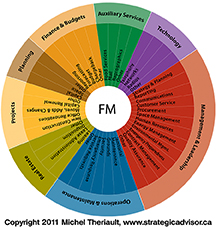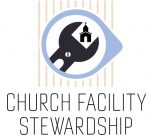In our previous series installment, we explored the vast contrasts between facility management and facility maintenance. The chasm has grown significantly over the past few decades. And, over the next several years, I believe it will grow at even a greater rate.
Why?
Because these facilities’ levels of complexity require a certain level of expertise and proactive thinking. Additionally, houses of worship are being more intentional with the care and life cycle management of their facilities.
By Tim Cool
Yes, the days of the facility manager-as-lightbulb-changer are waning, and for good reason. A professional facility manager can make or break an organization’s operational budget in a hurry.
Unlike some professions, facility management encompasses many different roles and skills. Not everyone in the facility or property management profession is responsible for all these roles. Some are responsible for specific functions as specialists; others are responsible for everything; others oversee all these roles through other specialists.
Regardless, it’s important to have a working knowledge of each one so you can effectively deal with your colleagues, manage staff, or interface with external resources.
A pie-shaped diagram is the easiest way to represent the broad responsibilities in the facility management profession, since it includes so many different skills and responsibilities. This pie graph below — which comes directly from Managing Facilities & Real Estate by Michel Theriault — shows the full range of facility management responsibilities.
 Theriault further describes the role of the facility manager as follows:
Theriault further describes the role of the facility manager as follows:
You could categorize them or subdivide them differently, but the fundamental responsibilities are all within this diagram. Depending on your role, you may be responsible for all these elements or just a few. You may also oversee them all, but have other experts on your team who focus on a specific aspect of the role. Some of these specific areas are actually represented by their own professions when performed as a distinct, separate role. For instance, a portion of the chart covers both commercial property management and project management. The facility management profession actually encompasses both of those functions.
From this, you can see that it is impossible for any given FM to have all the knowledge and skills to perform all the roles that are frequently expected of them. In addition, many of the responsibilities are non-technical, and they are in fact increasingly becoming strategic in nature. That’s why a facility manager has to rely on other experts, whether on their staff or as contractors and consultants. The profession of facility management isn’t just about the person with the facility manager title — it’s also about the large supporting cast of specialists, experts and other professionals.
The facility manager’s most useful skills are management- and leadership- related — particularly the ability to develop strategy, communicate, lead and manage resources. The top FMs in any large organization rose to their level because of those skills.

The issue of scope and responsibility is further expanded when you consider typical portfolios, which can range from a single building to a regional or national portfolio, and even an international portfolio of properties. Like many other professions, the larger the scope, the more people involved at different levels. Where a smaller property may have a single facility manager, a large portfolio may have a vice president of facilities, with several hundred staff under them.
Great perspective!

The church world, however, doesn’t think in these terms (as much as I believe it should). I get the sense that in most churches, the facility manager — or the operations manager — is the lowest position on the organizational chart and the first to get cut if the budget gets too tight. I have visited several church facility managers’ offices (if you can really call them that) over the past several years. Some were large, caged spaces — some of them actually “fenced in” with chain link — in boiler rooms. Others were corners of leftover space, with no windows, basements, storage rooms, and so on. Is this really the way to treat someone who has been asked to steward millions of dollars’ worth of Kingdom assets?
I wouldn’t want my personal office to reside in one of these spaces. Maybe I’m just picky — but maybe not. Have you spent a day in the facility manager’s office at your church? Did your clothes feel dirty when you got out of the chair? Probably; it’s likely that that same chair had paint cans stacked on it before you sat down.
Do we think that the facility manager is less critical to the ministry’s success than the youth pastor? Is this role less critical than that of the small groups minister? What about the accounting staff? If you said “no” to any of these questions, then why treat the facility manager like a second-class citizen?
Facilities represent a large part of any church’s assets and expenses; yet, they don’t usually receive the same attention as other parts of the organization.
While I agree that facilities are only a tool, they’re a tool that requires care and stewarding.
Tim Cool @TLCool is founder of Cool Solutions Group, and has assisted nearly 400 U.S. churches (equating to more than 4 million square feet) with their facility needs. He has collaborated with churches in the areas of facility needs analysis, design coordination, pre-construction and construction management, as well as life cycle planning / facility management. Cool Solutions Group is also the developer of eSPACE software products, including Event Scheduler, Work Order Management and HVAC integration.
Cool has written three books: Successful Master Planning: More Than Pretty Pictures; Why Church Buildings Matter: The Story of Your Space; and Church Locality, which is co-written by Jim Tomberlin, as well as a manual series entitled “Intentional Church.”



